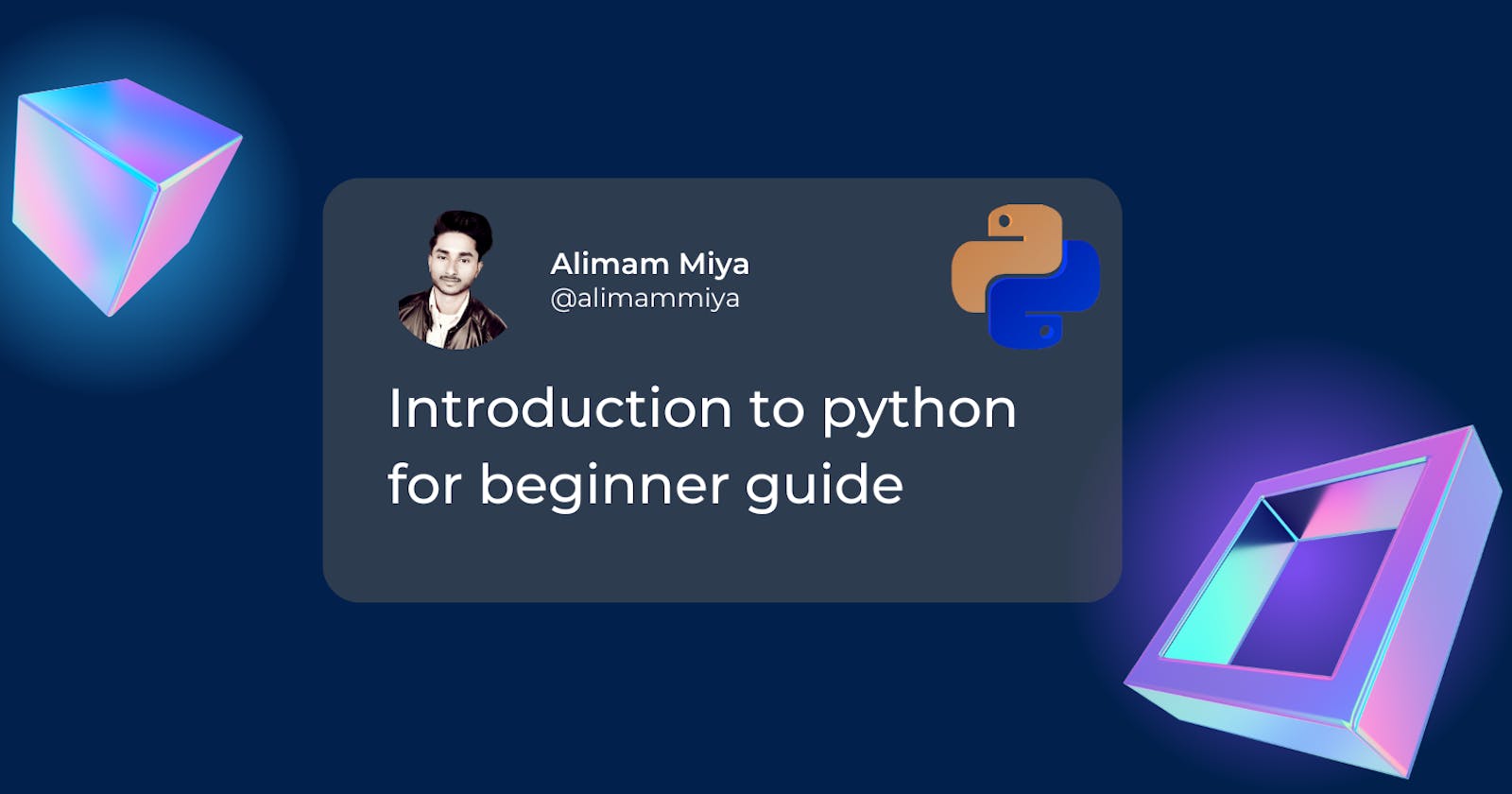Introduction to python for beginners guide
Python is a high-level, interpreted programming language that is widely used for web development, scientific computing, data analysis, artificial intelligence, and other tasks. It is known for its simplicity and readability, as well as its vast collection of libraries and frameworks that allow developers to easily perform complex tasks. Python also supports multiple programming paradigms such as object-oriented, functional and procedural. Python's syntax is simple and easy to learn making it a great choice for beginners.
What are the characteristics of Python?
Python is known for several characteristics, including:
Interpreted: Python is an interpreted language, which means that the source code is executed line by line, rather than being compiled into machine code.
High-level: Python is a high-level language, which means that it is closer to human language than machine language. This makes it easier to read and write, and more user-friendly.
Dynamically-typed: Python is a dynamically-typed language, which means that variables do not have to be declared with a specific data type. The data type of a variable is determined at runtime.
Object-oriented: Python supports object-oriented programming, which allows developers to create objects, classes, and methods to organize and structure their code.
Multi-purpose: Python is a general-purpose programming language, which means that it can be used for a wide variety of tasks, such as web development, scientific computing, data analysis, artificial intelligence, and more.
Large Standard Library: Python has a large standard library that provides a wide range of modules and packages that can be easily imported and used in a program, which makes the development process faster.
Easy to learn: Python has a simple and consistent syntax, which makes it easy for beginners to learn and understand.
What are the features of Python?
Some of the features of Python include:
Simple and easy-to-learn syntax: Python's syntax is simple and easy to understand, making it a great choice for beginners.
Dynamic semantics: Python's semantics is dynamic, meaning that the type of data is determined at runtime, and not at compile time.
Object-oriented: Python supports object-oriented programming, which allows developers to create objects, classes, and methods to organize and structure their code.
High-level: Python is a high-level language, which means that it is closer to human language than machine language. This makes it easier to read and write.
Portable: Python code can run on a wide range of platforms and operating systems without modification, making it a very portable language.
Automatic Memory Management: Python manages memory automatically, which means that developers do not have to worry about allocating and deallocating memory for their objects.
Built-in support for large data structures: Python has built-in support for large data structures, such as lists and dictionaries, making it easy to work with large amounts of data.
Comprehensive support for various programming paradigms: Python supports multiple programming paradigms, including object-oriented, functional, and procedural.
Support for third-party libraries and modules: Python has a wide range of third-party libraries and modules available, which can be easily imported and used in a program to add functionality and speed up development.
What is the application of Python?
Python is a versatile programming language and has a wide range of applications, some of which are:
Web development: Python is widely used for web development, with popular frameworks such as Django and Flask, which make it easy to build, test, and deploy web applications.
Scientific computing and data analysis: Python has a wide range of libraries such as NumPy, SciPy, and Pandas, which are commonly used for scientific computing and data analysis. These libraries provide powerful tools for data manipulation, analysis, and visualization.
Artificial Intelligence and Machine Learning: Python has a number of libraries such as TensorFlow, Keras, PyTorch, and Scikit-learn, which are commonly used to build AI and machine learning models.
Game development: Python can be used to build games using libraries such as Pygame and PyOpenGL.
GUI-based desktop applications: Python has a number of libraries such as PyQt and Tkinter, which are commonly used to build a graphical user interface (GUI) based desktop applications.
Network programming: Python has a number of libraries such as Scapy and Paramiko, which are commonly used to perform network programming tasks such as sniffing, packet manipulation and creating custom network protocols.
Automation and scripting: Python is often used for automation and scripting tasks, such as web scraping, data processing, and automating repetitive tasks.
Education: Python is a popular language for teaching computer science and other technical subjects, as it is easy to learn and understand, and has a wide range of applications.
Finance: Python is commonly used in finance for quantitative analysis, trading and risk management systems, and other financial applications.
Cybersecurity: Python is also used in cybersecurity, for example for writing scripts to automate tasks like penetration testing, network scanning and forensic analysis.
